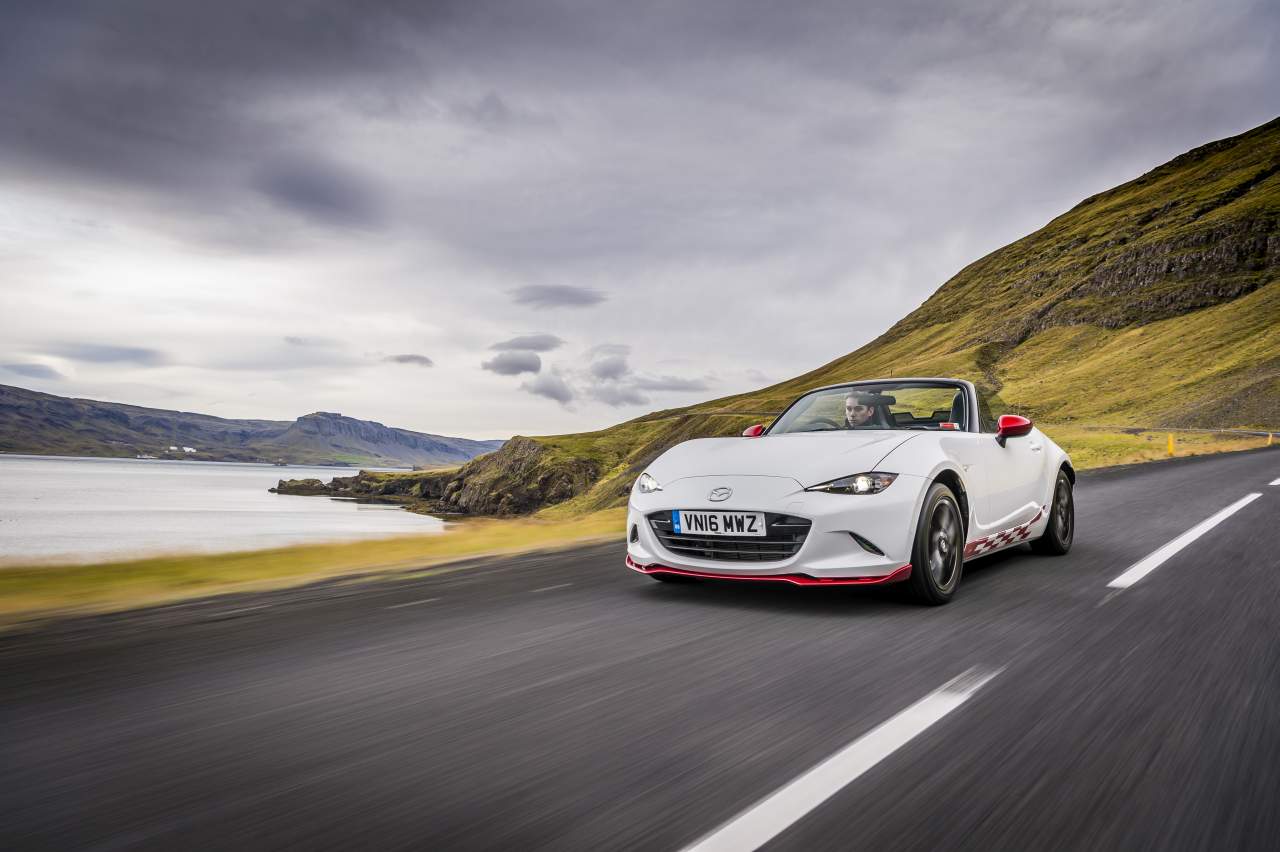If I had my way I would insist that they rename this magnificent road something descriptive like “Iceland’s road to natural phenomena”. The sat nav, refers to it simply as One.
Tourists though may know this well-maintained two-lane road as the Iceland Ring Road.
Yet you would have to burn some serious rubber to get all the way around the 832 miles that encircle this sub-arctic island. It passes pretty snow-capped mountains and brooding cloud topped volcanes, eye-watering boiling sulphur mud pools, tortured lava plains, thunderous waterfalls, jagged icebergs, and dozens of glaciers.
Driving around Iceland Ring Road in Mazda MK 5 icon convertible (c) Sharron Livingston
And I drove all around it heading north from Reykjavik then returning back there heading south in a mad-cap two-day junket in a dinky Mazda MX 5.
First things first – Blue Lagoon Spa
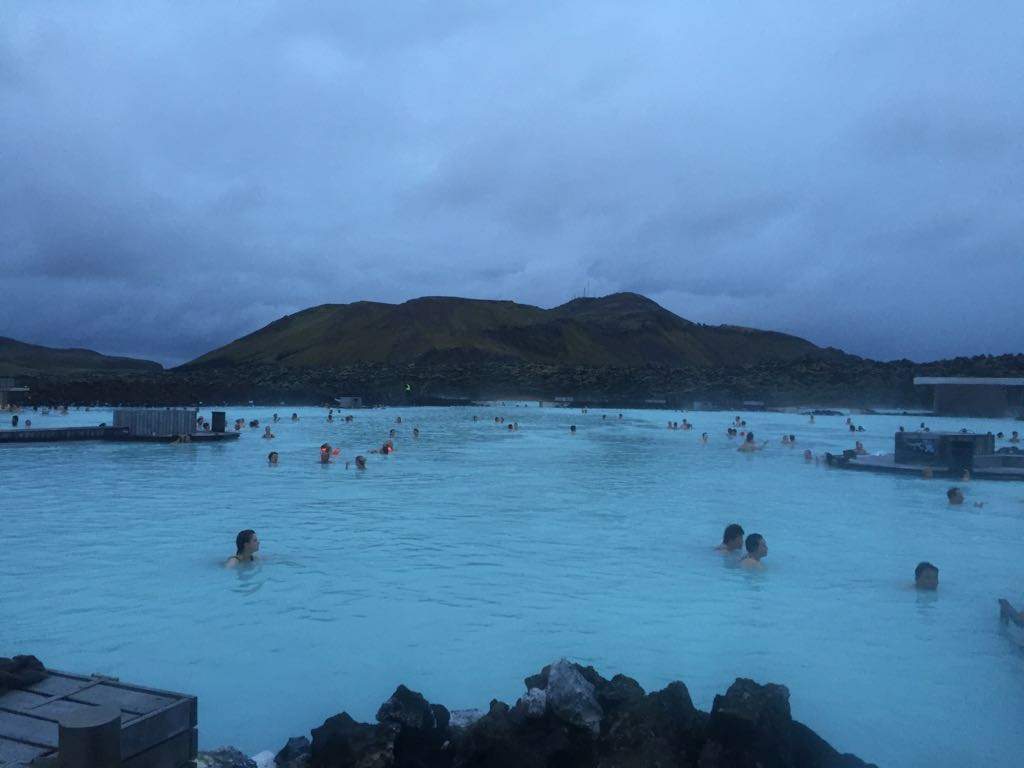
Blue Lagoon Spa (c) Sharron Livingston
Starting in Reykjavik, Iceland’s largest city and the world’s northernmost capital, I hopped into my roadster for a 47km detour to Grindavik to the Blue Lagoon outdoor spa.
I knew a relaxing dip into its placid bright blue mineral-rich waters at a reassuring 38C temperature overlooked by a lava field, and swish under its waterfall would set me up for the gruelling two-day drive. Brilliant value at £40 for the duration.
As a bonus, later when the sky was at its darkest I was lucky enough to see the Northern Lights with their curls of luminescent green. What a prelude for my driving bonanza!
Check out the city church – Hallgrímskirkja
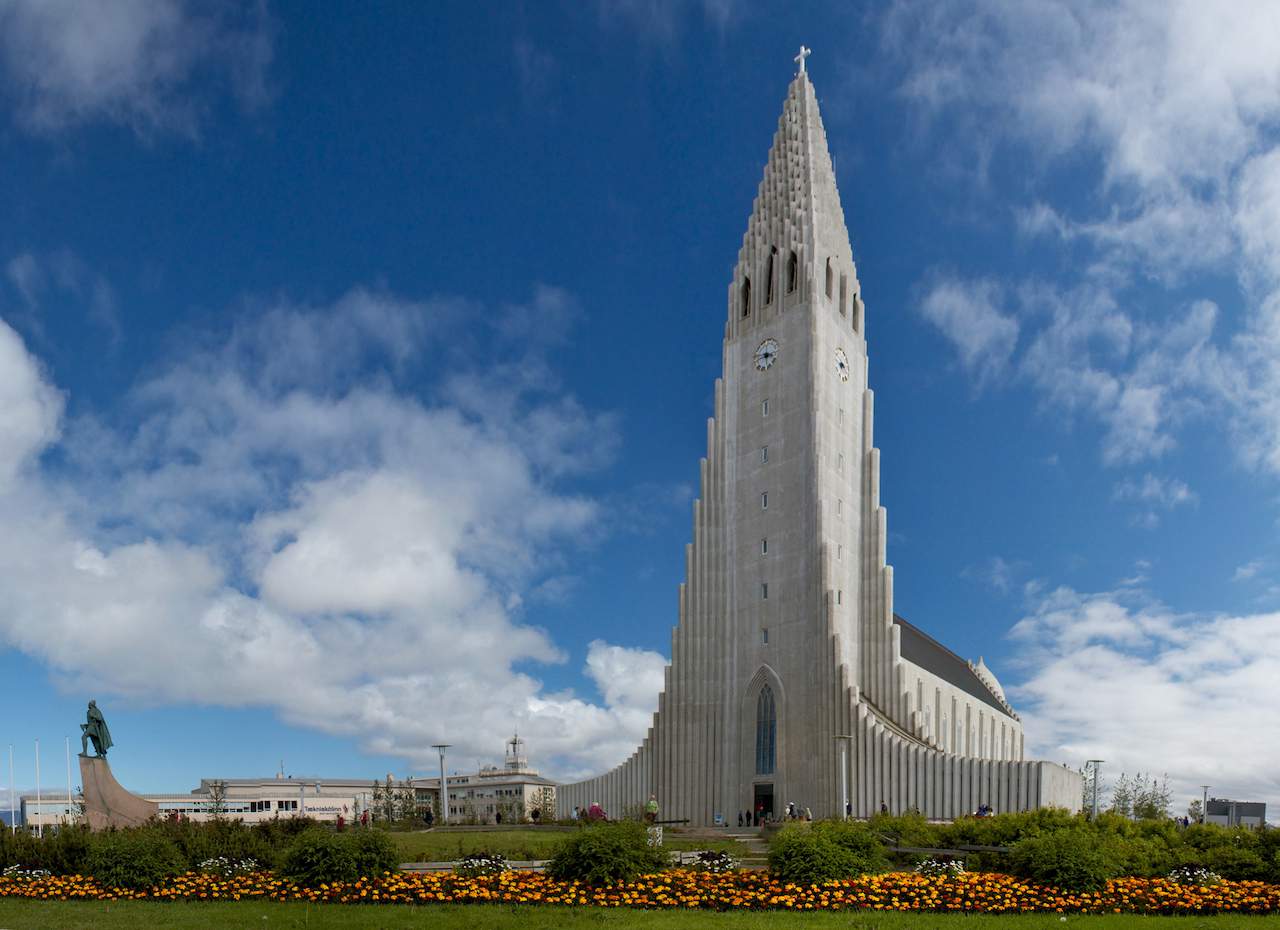
Hallgrímskirkja (c) flickr/Brian Gratwicke
I was behind the wheel early the next morning making my way through this low-rise city where the tallest building is the dramatic Hallgrímskirkja, church, the biggest in Iceland.
I couldn’t help wondering how something made entirely of concrete could look so interesting; almost like a spaceship about to take off.
The view from the top of the spire stretches the entire city and is the only place you can enjoy a panorama of landscape and colourful houses all the way to the bay.
A little bit of culture
Sometimes a visit to a museum gives a cultural backdrop worth having and I got this at the National Museum.
As this is the land of the Northern Lights, I didn’t stop there. I nipped into the Perlan Museum which at around £26 to enter seems a little expensive. But I did get to eyeball the northern lights planetarium and experience their man-made 330ft-long ice cave – the first of its kind in the world.
Away from city limits – vast isolation and scenery
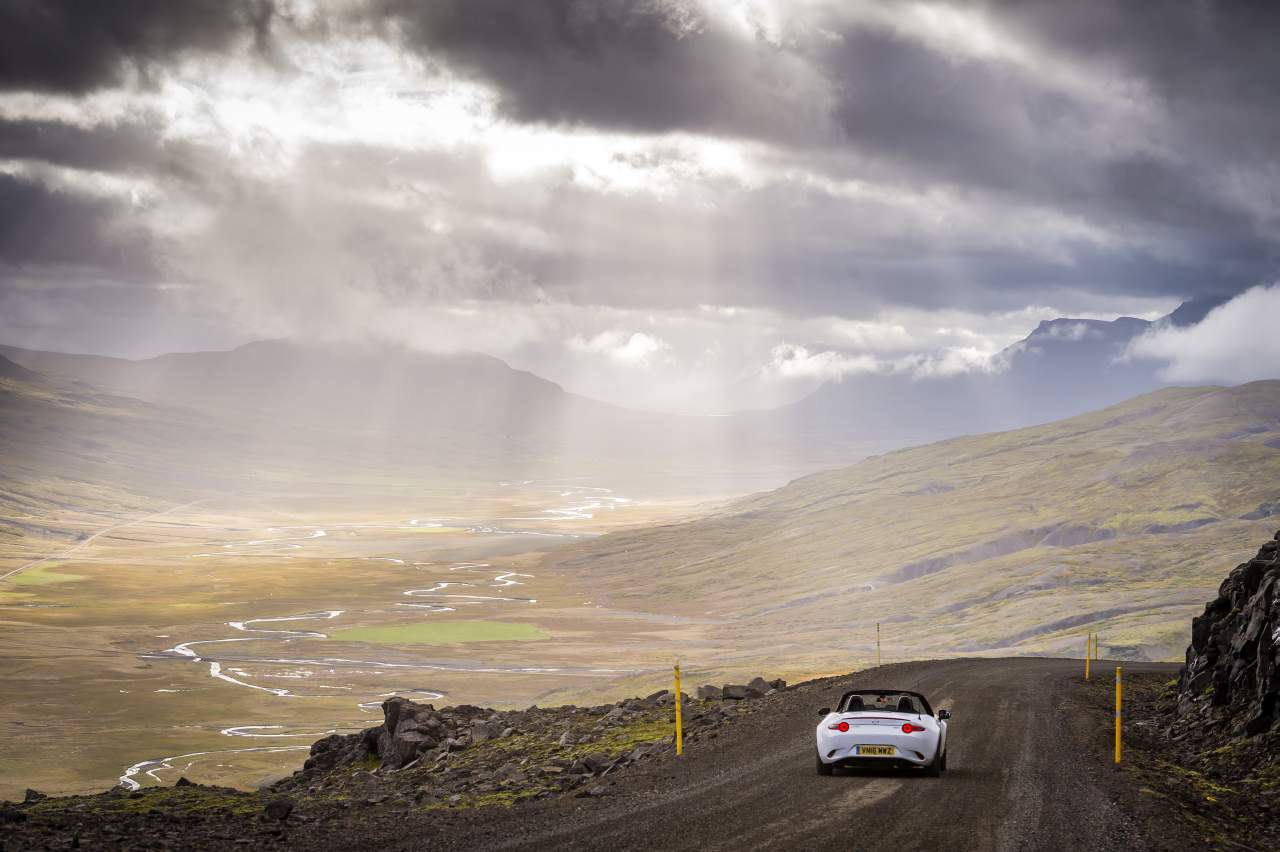
driving through vast isolation (c) Mazda
Stopping at traffic lights with quaint heart-shaped red lights, then turning onto One, the road opened to a shock of a wilderness hemmed by dark, brooding mountains. There were hardly any other cars around and not much sign of human life.
The road snaked through the undulating landscape and sometimes after a swerve or curve a clutch of red-roofed cottages or a lonesome wooden church would appear. Yet with so few people around, I wondered how these houses of prayer could fill their pews.
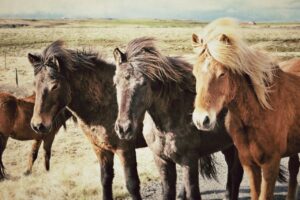
Icelandic horses
There were plenty of nonchalant sheep though who seemed unperturbed by passing traffic.
At times fields would be hosting smallish Icelandic horses – a regional breed that resembles ponies. They were brought here by Norse settlers in the 9th century and are bred to be hardy and used to work the land, race and for pleasure.
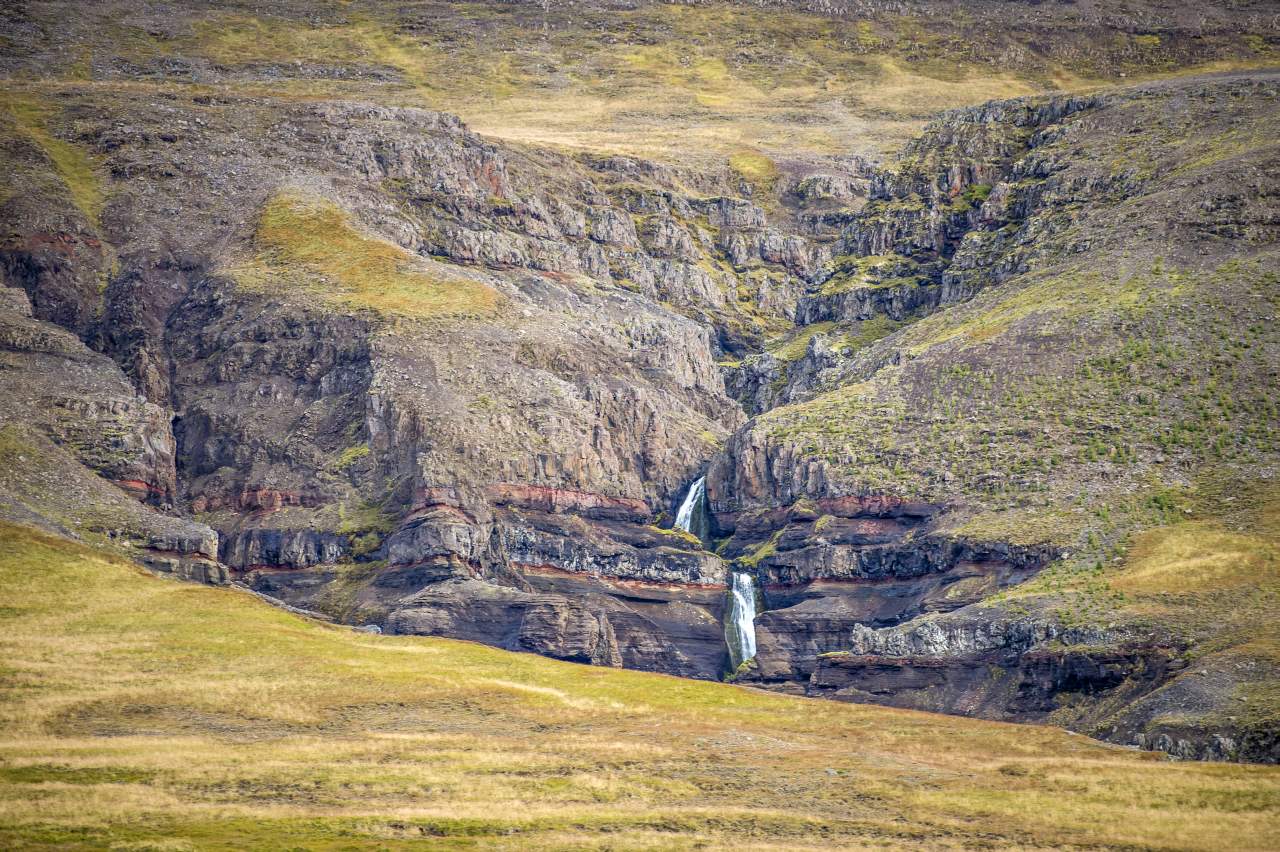
Within the nooks and crannies of the land you can see strings of waterfalls
Within the nooks and crannies of the dark rugged or moss covered hills and tors, strings of waterfalls cascaded catching the light on their way down. It’s a recurring feature which adds movement to the stillness.
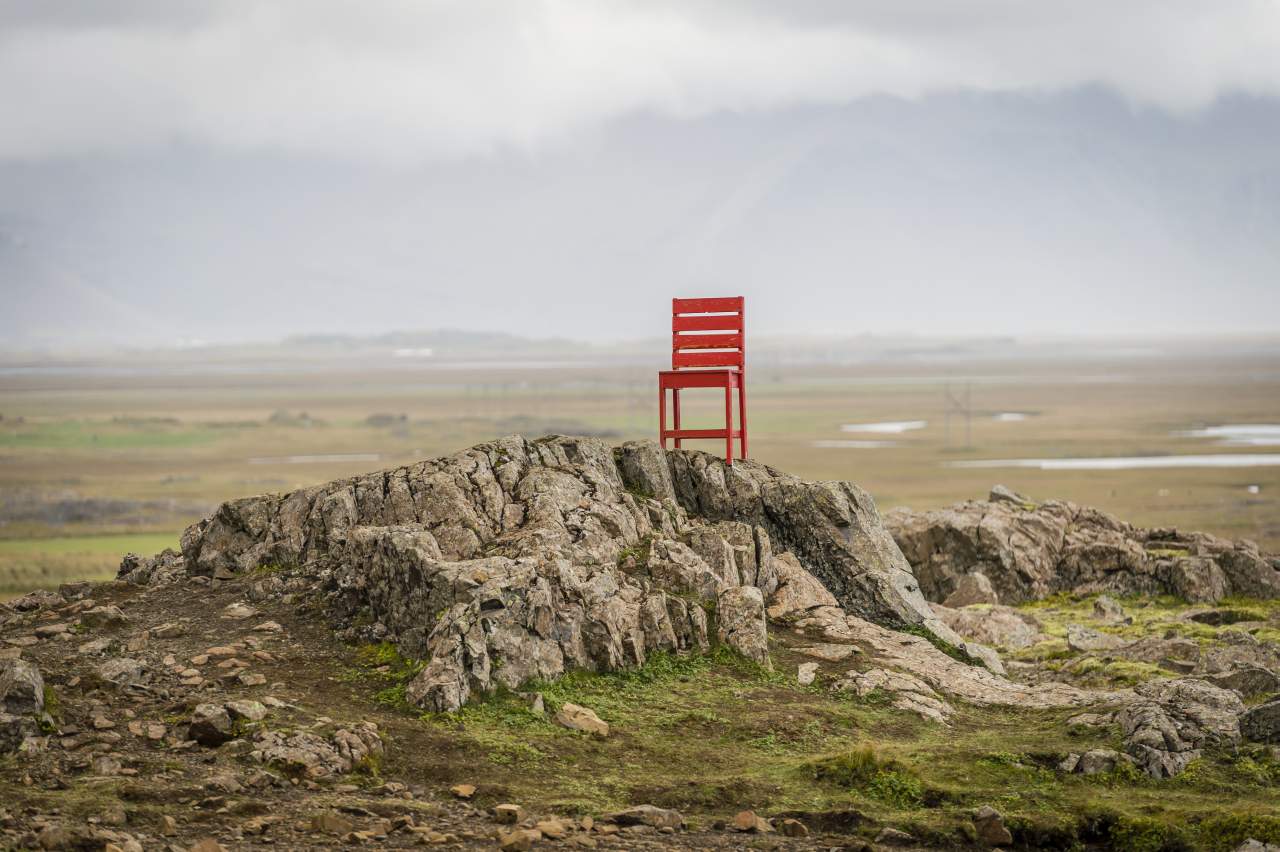
Giant red chair sculpture
Bizarre sculptures, such as a giant red chair (taller than a human being) or a giant man randomly turned up to add humour to the bleak vastness.
A glacier on a Snæfellsjökull volcano
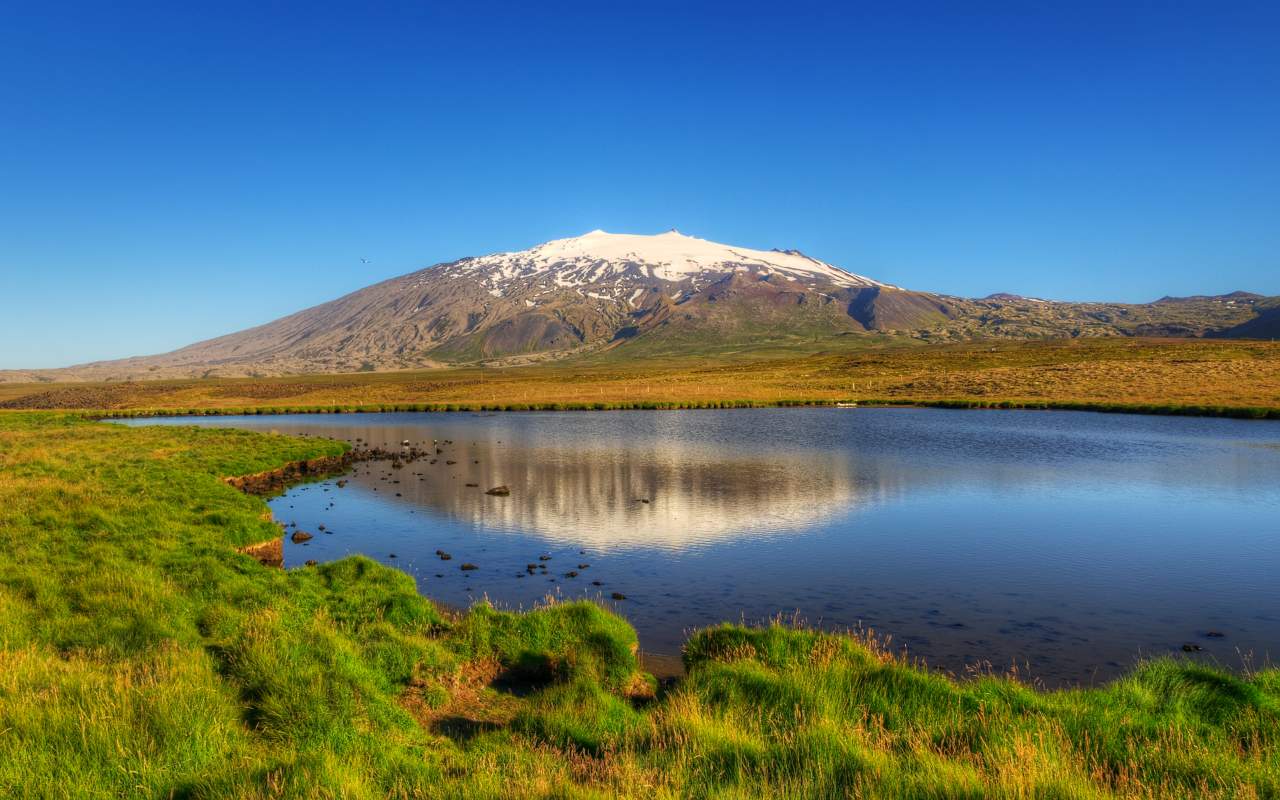
Snæfellsjökull volcano (c) wikimedia/Axel Kristinsson
Glaciers are a recurring feature along One. These are masses of glacial ice that look like stretches of white on the higher echelons of the mountains. The most famous is the one atop the 700,000 year old Snæfellsnes volcano. Fans of Journey to the Center of the Earth (1864) by Jules Verne will have read about it as the doorway to the centre of the earth.
Iceland’s second biggest city – Akureyri
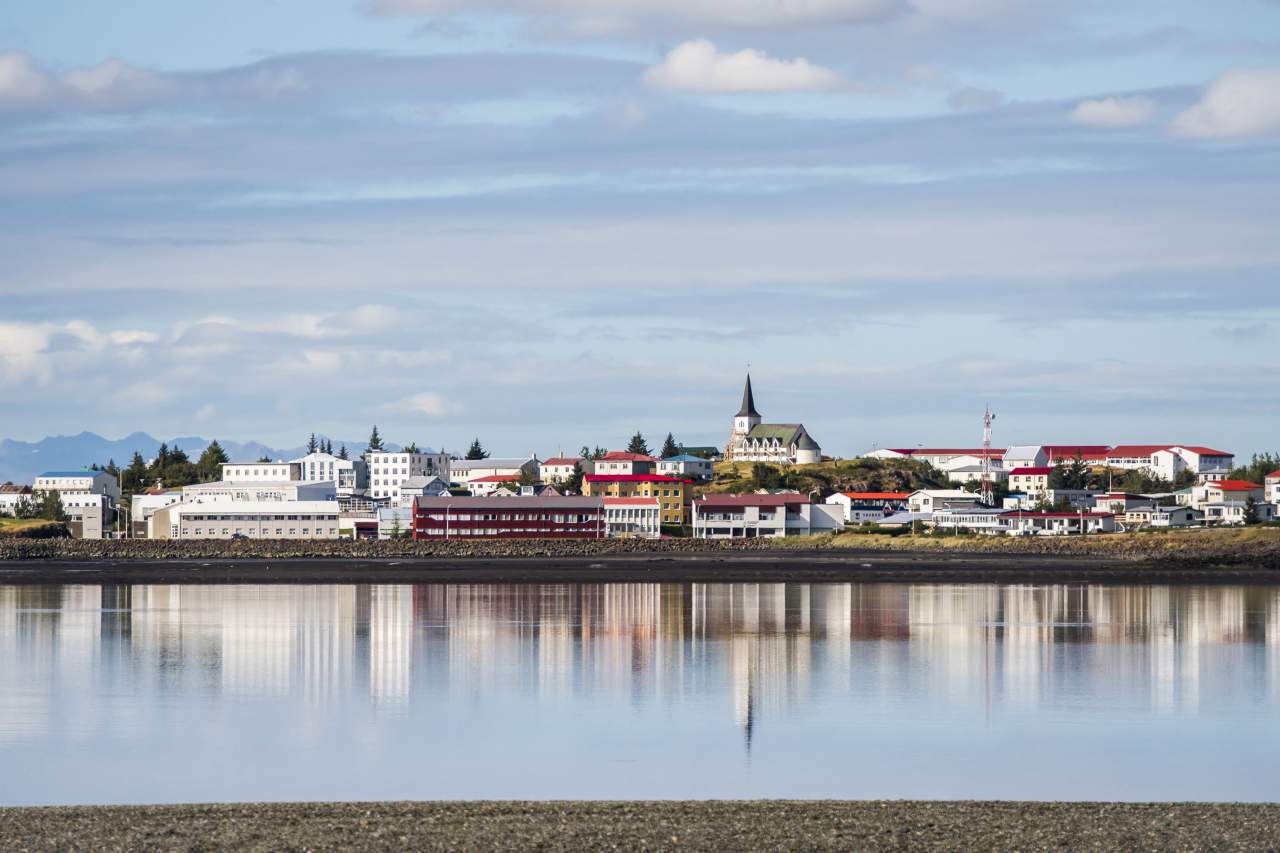
Akureyri – the second largest city in Iceland
Most towns along the route are pretty dull. Not so Akureyri (dubbed the capital of North Iceland) was different. Iceland’s second-largest city had a hint of Monaco about it. With only 18,000 inhabitants, there is no big city vibe, but plenty of visual charm. It sits at the head of Iceland’s longest fjord with colourful homes built on the waterfront with a snow-capped alpine backdrop.
Goðafoss Waterfall
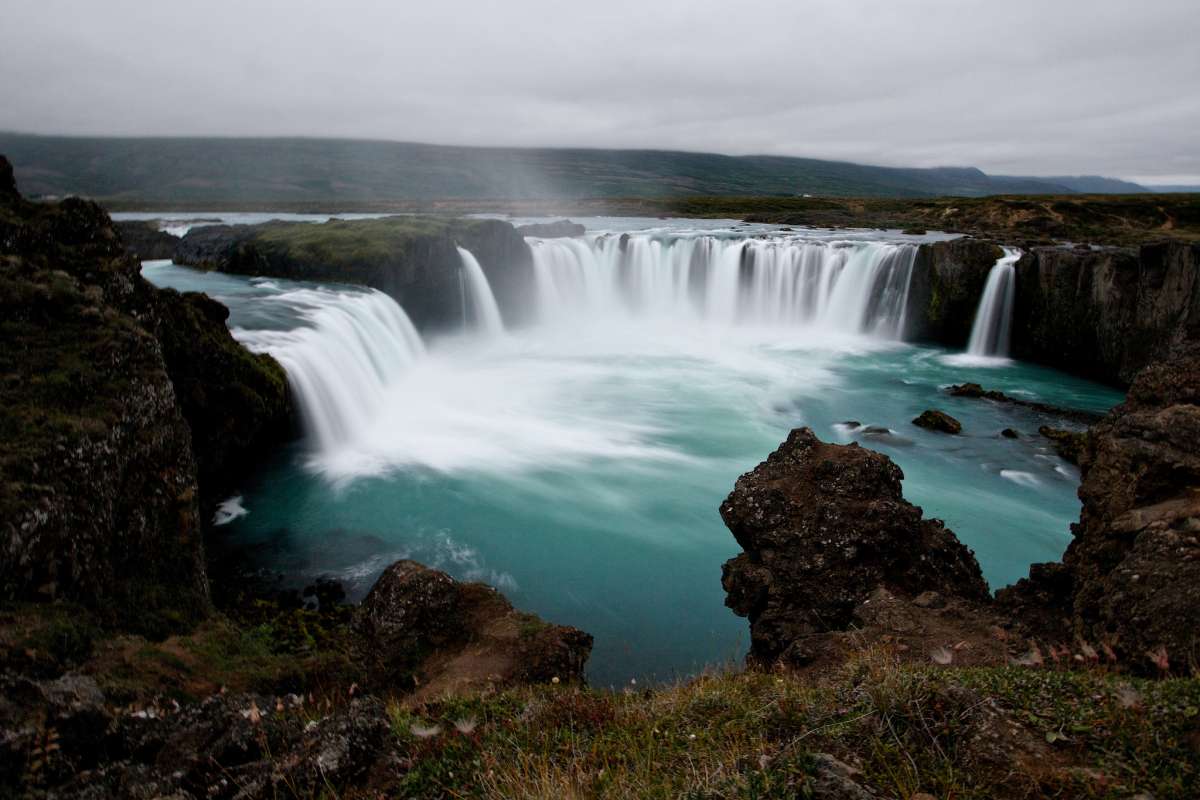
Godafoss (c) flickr/Marco Bellucci
Located just south of Húsavík, a waterfall that means “of the gods” had to deliver a lot to live up to its name. And it did. I was able park up literally just steps away and I could not only hear but feel the thunderous pounding force as the water provided by the Skjálfandafljót River – the longest in the country – fell 12 metres over a 30-metre width. I could still feel the spray some 20 or so yards away.
Geothermal area – Námafjall Hverir
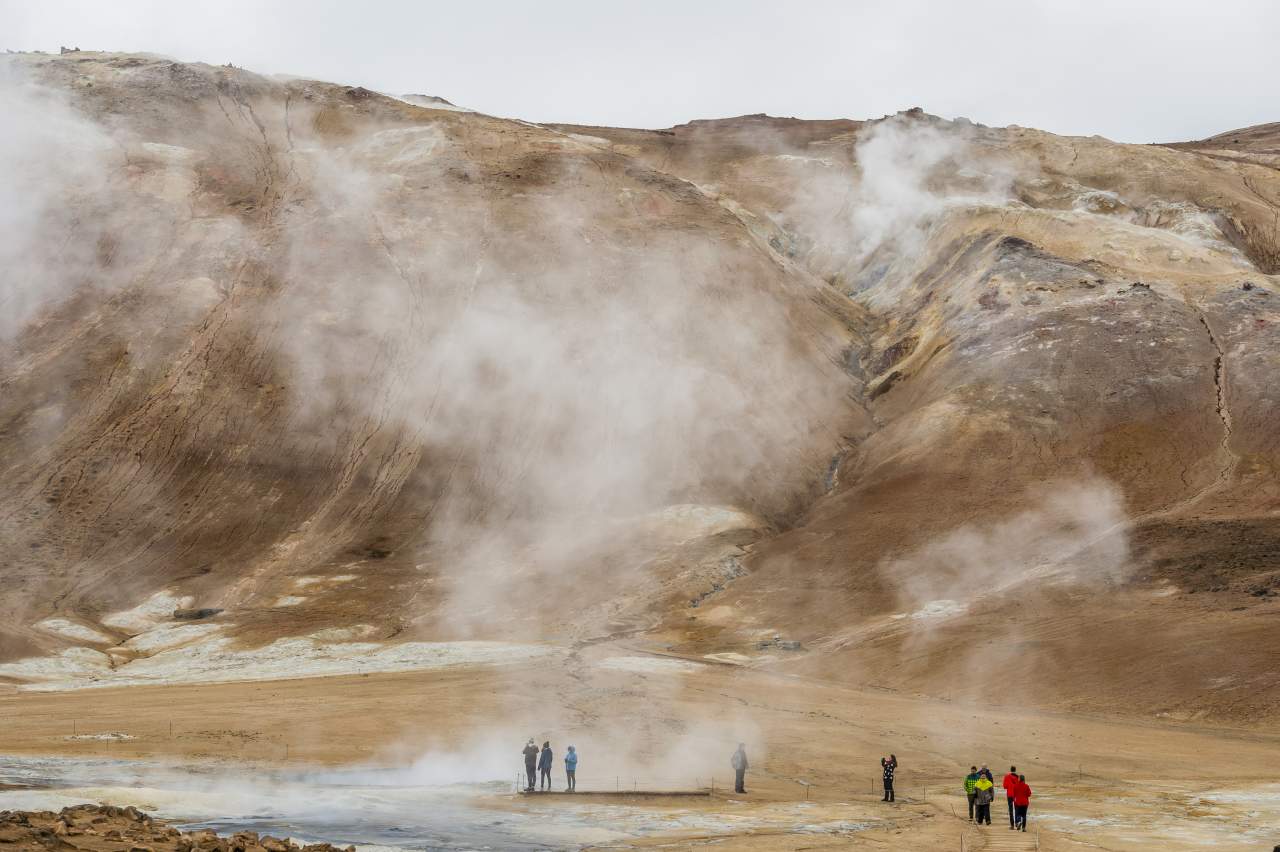
Geothermal mud pools
At Mývatn lake, the landscape becomes barren in nature. The fresh Icelandic air took on a sulphuric aroma. Following my nose I found myself in front of the Námafjall Hverir geothermal area, reminiscent of a lunar landscape, to see the fumaroles (steam springs) and boiling sulphurous mud pools. These are 1000 metres deep where temperatures reach a whopping 200°C.
The humungous mud craters with their constant emissions of fumes certainly had a wow factor, but the sulphur burned my eyes and left me coughing.
Geysir, Strokkur
Another geothermal must-see is located by the Hvítá River it’s incredible how close you can stand by this geyser, the most famous in the land. The shock of the eruption when it happens is compelling and as these happen every five minutes or so often reaching heights of 50ft it’s not long to wait for the next one. The Geysir Center is interesting enough for a quick pop-in to check out exhibits and presentations.
Is there a monster in town? Eglisstadir
The most interesting thing about Eglisstadir is the legend of the serpentine monster said to live in the nearby Lagarfljot lake. They say there have been sightings for hundreds of years. The last sighting of the monster swimming is said to be captured on video in 2012. You can blame Jon Amason and his collection of Icelandic folktales published in 1862.
Black Sand Beach – Reynisfjara
You will know you are near when you can detect the faint scent of seaweed. Choppy waters break upon the rocks and cliffs while stretches of volcanic black sand and dark grassy patches create patterns on the ground. On its landscape is Gardar, an amazing basalt cliff. Out in the sea are the spectacularly shaped Reynisdrangar a series of basalt sea stacks.
Black Desert
At Skaftárhraun, just west of Kirkjubæjarklaustur, there is endless Skeiðarársandur, a 1000-sq-km area that resembles a black desert. It is made of a mix of gravel, silt and sand dumped by glacial runoff. In concert with dark cloudy mountains with white glacier patches, it was a haunting visual melody.
Jökulsárlón Iceberg Lagoon
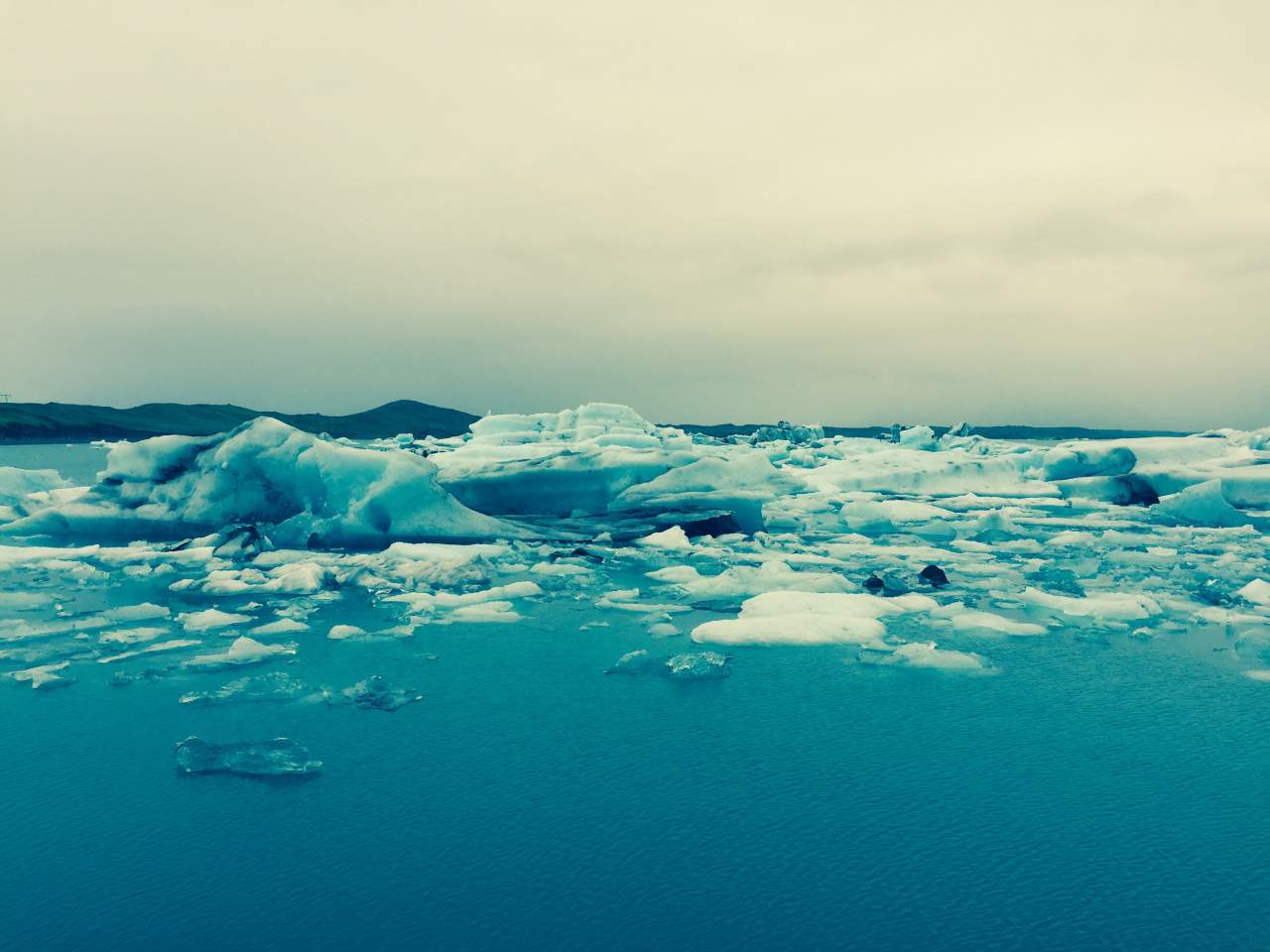
Ancient Icebergs
You pass over several single lane bridges on the route and you may spot icebergs floating. Either way, you will definitely feel a slight chill in the air as you near Jökulsárlón. This lagoon is brimful with icebergs, thanks to Breiðamerkurjökull glacier which is slowly melting. Some icebergs are so old and so compact they are deep blue in colour.
Skógafoss Waterfall
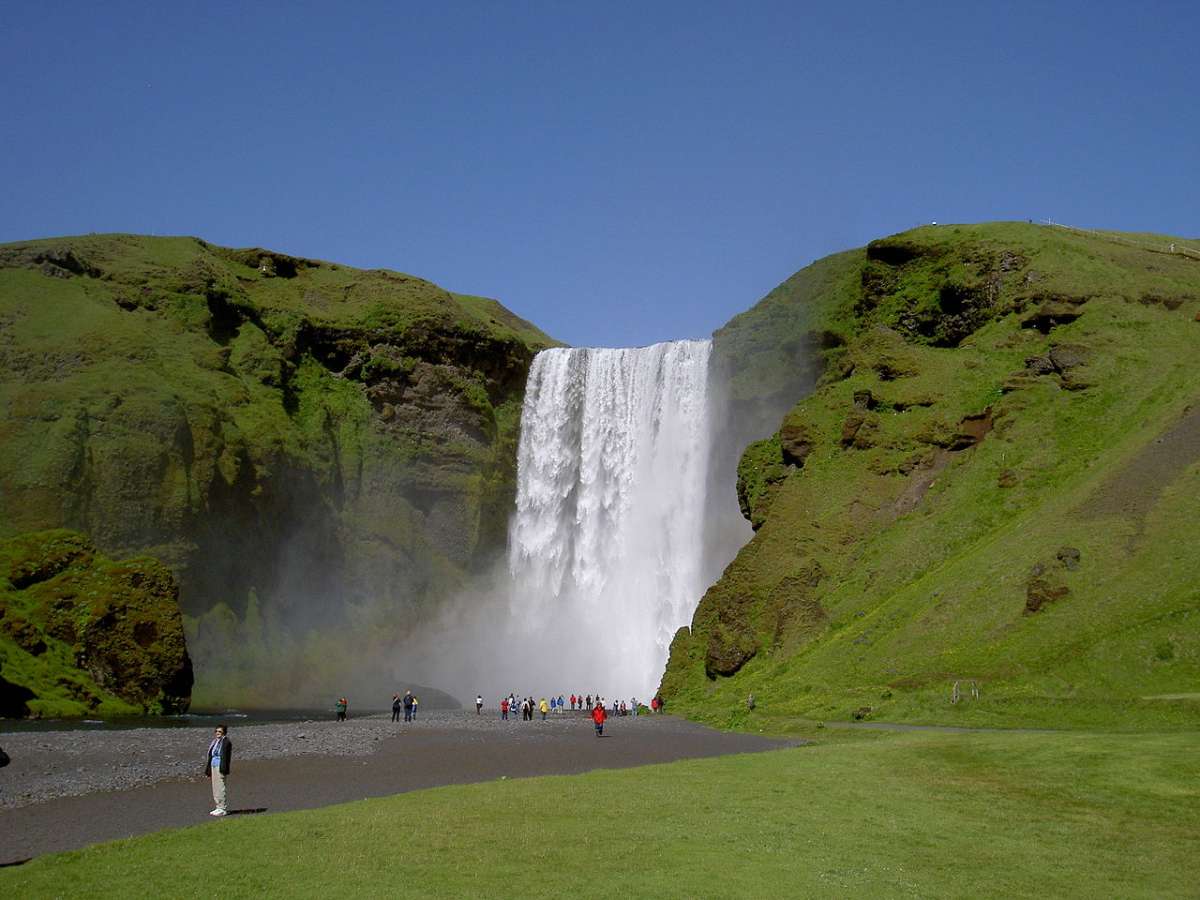
Skogafoss (c) wkimedia/Chris 73
The Skogafoss waterfall is a veritable rival to Goðafoss. Rectangular in shape it has a 60 metre drop and a 25 metre width. People look miniscule in front of it. There are wooden steps that lead to a viewing platform at the top. Often a rainbow forms.
The Door hole – Dyrhólaey peninsula
On the way to the delightful village of Vik, I passed moss-covered lava plains that resembled endless amounts of gnocchi covered in pesto sauce to detour onto road 218 to Dyrhólaey peninsula, Iceland’s most southern point. Here you can see puffins nesting on the cliffs.
In front of the peninsula, there is a huge black arch of lava reaching out into the sea hence its name. Dyrhólaey means “the hill island with the door hole”.
Fly: Icelandair have return flights to Rejkavik
Stay: Hotel Borg in Reyjkavik (rooms from £297 per night) and Hotel Guesthouse Egilsstadir in Egilsstadir (rooms from £145)
Visit: Blue Lagoon. 75 euros buys you entrance (stay all afternoon), two facial masks and a cocktail. Must be pre-booked.
Read also: Iceland’s Top 5 Waterfalls

